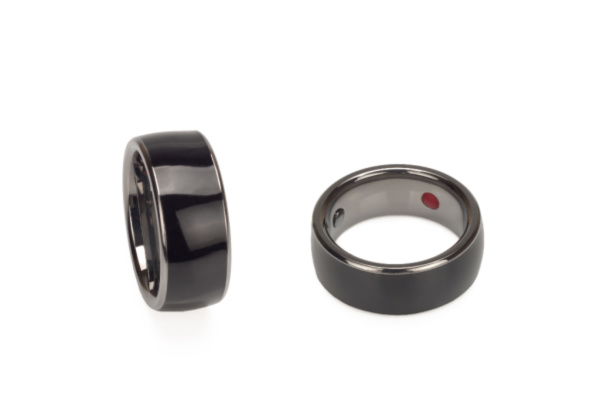As Wareable reports, Indiana-based startup Ultrahuman is getting into the smart ring game with the promise to help wearers better understand their metabolic health. Having already launched its wearable M1 glucose monitoring patch, the Ultrahuman Ring can work in conjunction with the M1 patch or on its own to help draw links between your lifestyle choices and the impact it has on your metabolism. While Ultrahuman says its ring works without the smart patch, it sounds like combining the two will offer the richest tracking experience.
It’s packing motion sensors to track movement and sleep with a heart rate sensor also packed in to deliver real-time data and then offer actionable insights via the companion phone app, which is available for both Android phones and iPhones. Ultrahuman also says the Ring is able to perform a body scan, picking up heart rate, heart rate variability and body temperature to help users understand how those metrics vary based on what you do during the day and to also offer recovery advice based on that information. That’s a whole lot of tracking for a small device that looks like the already popular Oura Ring.
According to Tom’s Guide, the Ultrahuman Ring doesn’t have a screen, so it won’t badger you with notifications or haptics on your fingers, and all the stats and information will be on the Ultrahuman app. Ultrahuman says this is intentional to keep distractions at bay. Like Oura, the Ultrahuman Ring offers 4 to 6 days of battery life, which is in tune with fitness trackers as well. But Ultrahuman seems to go all out on the durability of the ring. It is made of “fighter jet” titanium and features a tungsten carbide coating to make it really tough. Ultrahuman says they went this route to help with weight lifting, rowing and other exercises that would otherwise damage the ring.
The real superpower of the Ultrahuman Ring its ability to measure the real-time metabolic rate of users. It does this in tandem with the Ultrahuman M1 patch, which is a glucose monitor. The M1 patch has a hollow needle to continuously monitor blood sugar levels in real-time. It then gives a “metabolic score” based on food and exercise. This shows how certain foods might affect a workout, recovery or even sleep. Users can check whether their glucose metabolism is affected by the lack of sleep versus the food itself, which seems like a more accurate way of collating metabolic data compared to competitors like Oura.
As Tom’s Guide points out, this is not the first device to measure our metabolism. The metrics that the Ultrahuman Ring tracks are similar to Oura but Oura Ring doesn’t give a “metabolic score.” Lumen’s metabolism tracker also tells users how their food impacts their fitness performance but it is in the form of a “carb breathalyzer” that requires users to breathe into the device to check what kind of fuel the user is burning. Ultrahuman uses two of their products together to bring this data to users, which is pretty unique.
Preorders for the Ultrahuman Ring began on July 7, with shipping of the smart ring starting in August 2022. There’s a pricing roadmap with the first 200 orders picking it up for $199 with the regular pricing going up to $299. That’s around the price you can expect to pay for the latest Oura Ring, so similar price points for both. We’ll have to wait for the product to get into consumers’ hands to get more reviews.
—
Photo Credit: Gereti Studio / Shutterstock.com
